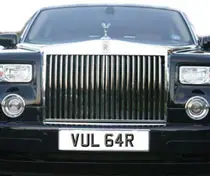From County Councils to Centralised Agency A History of the DVLA in the UK
Reg Plates ArticleFrom County Councils to Centralised Agency A History of the DVLA in the UK

The Driver and Vehicle Licensing Agency (DVLA), responsible for keeping track of drivers and vehicles on the road in the United Kingdom, boasts a surprisingly recent history. While the automobile itself has a longer presence, the need for a centralised system to manage licensing and registration only emerged in the latter half of the 20th century. This article explores the evolution of the DVLA, from its roots in local authorities to its current status as a key agency for road safety and vehicle administration.
Early Days: County Councils and the Rise of the Motor Car
The story begins with the Motor Car Act of 1903, which marked the official arrival of automobiles on British roads. Responsibility for registering vehicles fell to County Borough and County councils throughout Great Britain. These local authorities issued licenses that were simply a yellow document allowing the holder to operate a "motor car or motor cycle."
Interestingly, these early licenses didn't categorize vehicle types as we see today. It wasn't until 1930 that licenses began specifying which classes of vehicles an individual could drive, forming the basis for the category section found on modern UK driving licenses.
Testing the Waters: Competency Checks and Wartime Disruption
The concept of driver competency testing entered the scene in 1934, with the introduction of the Motor Vehicles Regulations coming into effect the following year. These regulations mandated competency tests for drivers, ensuring a basic level of skill before hitting the road. However, World War II disrupted this progress, and driver competency tests were suspended for seven years, resuming only in 1946.
Centralization Takes Hold: The Birth of the DVLC
The need for a more efficient and centralized system became apparent as vehicle numbers continued to rise in the post-war era. Local authorities, managing licenses with a three-year renewal cycle, struggled to keep pace. In 1971, the decision was made to centralize the licensing system. This not only streamlined administration but also opened the door for linking licenses to the Police National Computer, a crucial step for improved road safety.
Furthermore, the centralization process facilitated extending the validity period of licenses from three years to the holder's 70th birthday. This change, implemented alongside the new system, remains in place today.
1968 marked a significant turning point with the establishment of a central licensing system in Swansea, Wales. This new entity, initially named the Driver and Vehicle Licensing Centre (DVLC), took over the responsibility of issuing licenses previously handled by local councils. A year later, a purpose-built centre was constructed in Swansea, laying the groundwork for the DVLA as we know it.
The 1990s: The DVLA Emerges and Embraces Change
The year 1990 witnessed another key development. The DVLC was renamed the Driver and Vehicle Licensing Agency (DVLA), reflecting a shift towards a more comprehensive agency encompassing both driver and vehicle licensing. This change also coincided with the DVLA becoming an executive agency of the Department for Transport (DfT), solidifying its place within the national transport infrastructure.
The 1990s also saw significant changes in driver licensing regulations. Provisional license holders, for example, were no longer permitted to carry pillion passengers on motorcycles, even if the passenger held a full license. Additionally, Compulsory Basic Training (CBT) was introduced for new moped and motorcycle riders, emphasizing the importance of essential safety skills before venturing onto the road.
Modernisation and a Focus on Online Services
The 21st century has brought about a new era for the DVLA, characterized by a growing emphasis on online services. The agency has continuously expanded its online presence, allowing individuals to renew licenses, register vehicles, and access a variety of other services electronically. This shift towards digital services has not only improved convenience for users but also streamlined internal processes for the DVLA.
The introduction of photocard driving licenses in 1998 (excluding Northern Ireland until 2013) further enhanced security and identification. Today, the DVLA continues to develop its online services, aiming to provide a comprehensive and user-friendly platform for motorists.
The Future of the DVLA
As technology continues to evolve, the DVLA is likely to face new challenges and opportunities. Electric vehicles, autonomous driving technology, and the increasing demand for online services are all factors that will shape the agency's future. The DVLA's ability to adapt and embrace these changes will be crucial in maintaining its effectiveness in managing drivers, vehicles, and road safety in the UK.
In conclusion, the DVLA has come a long way since its beginnings as a decentralized system managed by local authorities. The shift towards a centralized agency, coupled with the introduction of driver competency tests and online services, has significantly improved road safety and administrative efficiency.
It all started back in 1991 when our love and obsession for private number plates was born.
Since then we have grown steadily over the years to become a leading light in the private number plate industry holding our own stock of high quality number plates and many thousands of registrations we are selling for trade and private clients including many celebrities and sports personalities.


- FREE TRANSFER SERVICE - your paperwork is handled by our trained team
- OVER 30 YEARS EXPERTISE - long established and trusted company
- DVLA RECOGNISED RESELLER - linked directly from the DVLA website
- TRADE ASSOCIATION MEMBERS - MIRAD and CN Guild members


